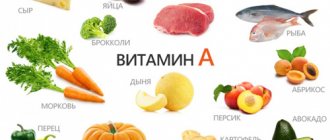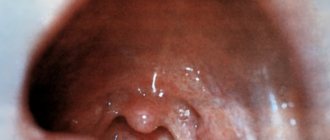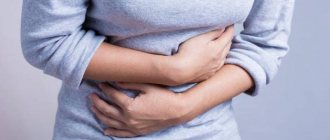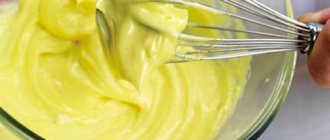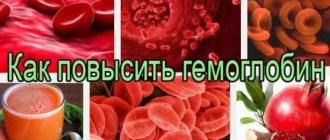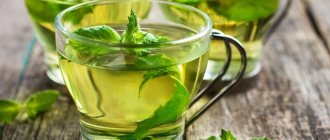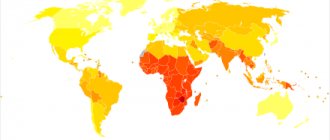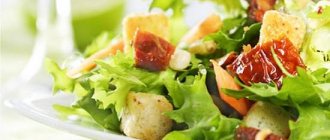Fully or partially limited products
A diet for pulmonary sarcoidosis involves excluding from the diet fatty meats, ham, smoked/semi-smoked sausages, waterfowl meat, white rice, pasta, sweets (sugar, jams, waffles, chocolate, preserves, cakes, cookies, pastries, sweets) , dairy products (cheese, sour cream, cream), semolina porridge, various pickles and pickled products, fast food.
The consumption of animal/cooking fats, mayonnaise, margarine, and vegetable-milk mixtures is not recommended. The consumption of table salt is limited, spicy and fried foods, canned fish, packaged juices, carbonated and alcohol-containing drinks, and strong coffee are completely excluded from the diet.
Table of prohibited products
| Proteins, g | Fats, g | Carbohydrates, g | Calories, kcal | |
Vegetables and greens | ||||
| canned cucumbers | 2,8 | 0,0 | 1,3 | 16 |
| pickles | 0,8 | 0,1 | 1,7 | 11 |
Nuts and dried fruits | ||||
| nuts | 15,0 | 40,0 | 20,0 | 500 |
Snacks | ||||
| potato chips | 5,5 | 30,0 | 53,0 | 520 |
Cereals and porridges | ||||
| white boiled rice | 2,2 | 0,5 | 24,9 | 116 |
Flour and pasta | ||||
| pasta | 10,4 | 1,1 | 69,7 | 337 |
| vareniki | 7,6 | 2,3 | 18,7 | 155 |
| pancakes | 6,3 | 7,3 | 51,4 | 294 |
| dumplings | 11,9 | 12,4 | 29,0 | 275 |
Bakery products | ||||
| bagels | 16,0 | 1,0 | 70,0 | 336 |
| buns | 7,2 | 6,2 | 51,0 | 317 |
| buns | 7,9 | 9,4 | 55,5 | 339 |
| wheat bread | 8,1 | 1,0 | 48,8 | 242 |
Confectionery | ||||
| jam | 0,3 | 0,2 | 63,0 | 263 |
| jam | 0,3 | 0,1 | 56,0 | 238 |
| candies | 4,3 | 19,8 | 67,5 | 453 |
| cookie | 7,5 | 11,8 | 74,9 | 417 |
Ice cream | ||||
| ice cream | 3,7 | 6,9 | 22,1 | 189 |
Cakes | ||||
| cake | 4,4 | 23,4 | 45,2 | 407 |
Chocolate | ||||
| chocolate | 5,4 | 35,3 | 56,5 | 544 |
Raw materials and seasonings | ||||
| brewer's yeast | 12,7 | 2,7 | 0,0 | 75 |
| mayonnaise | 2,4 | 67,0 | 3,9 | 627 |
| honey | 0,8 | 0,0 | 81,5 | 329 |
| sugar | 0,0 | 0,0 | 99,7 | 398 |
| salt | 0,0 | 0,0 | 0,0 | — |
| tomato sauce | 1,7 | 7,8 | 4,5 | 80 |
| vinegar | 0,0 | 0,0 | 5,0 | 20 |
Dairy | ||||
| milk | 3,2 | 3,6 | 4,8 | 64 |
| cream 35% (fat) | 2,5 | 35,0 | 3,0 | 337 |
| sour cream 18% | 2,5 | 18,0 | 3,6 | 184 |
Cheeses and cottage cheese | ||||
| cheese | 24,1 | 29,5 | 0,3 | 363 |
| cottage cheese 18% (fat) | 14,0 | 18,0 | 2,8 | 232 |
Meat products | ||||
| fatty pork | 11,4 | 49,3 | 0,0 | 489 |
| salo | 2,4 | 89,0 | 0,0 | 797 |
| beef liver | 17,4 | 3,1 | 0,0 | 98 |
| bacon | 23,0 | 45,0 | 0,0 | 500 |
| ham | 22,6 | 20,9 | 0,0 | 279 |
Sausages | ||||
| smoked sausage | 28,2 | 27,5 | 0,0 | 360 |
| pork sausages | 11,8 | 30,8 | 0,0 | 324 |
Bird | ||||
| smoked chicken | 27,5 | 8,2 | 0,0 | 184 |
| duck | 16,5 | 61,2 | 0,0 | 346 |
| goose | 16,1 | 33,3 | 0,0 | 364 |
Eggs | ||||
| hard-boiled chicken eggs | 12,9 | 11,6 | 0,8 | 160 |
Fish and seafood | ||||
| dried fish | 17,5 | 4,6 | 0,0 | 139 |
| salted fish | 19,2 | 2,0 | 0,0 | 190 |
| canned fish | 17,5 | 2,0 | 0,0 | 88 |
| semi-finished fish products | 12,5 | 6,7 | 14,7 | 209 |
| salmon | 21,6 | 6,0 | — | 140 |
| tuna | 23,0 | 1,0 | — | 101 |
| hake | 16,6 | 2,2 | 0,0 | 86 |
Oils and fats | ||||
| butter | 0,5 | 82,5 | 0,8 | 748 |
| animal fat | 0,0 | 99,7 | 0,0 | 897 |
Alcoholic drinks | ||||
| vodka | 0,0 | 0,0 | 0,1 | 235 |
| beer | 0,3 | 0,0 | 4,6 | 42 |
Non-alcoholic drinks | ||||
| cola | 0,0 | 0,0 | 10,4 | 42 |
| coffee | 0,2 | 0,0 | 0,3 | 2 |
| black tea | 20,0 | 5,1 | 6,9 | 152 |
| * data is per 100 g of product |
Diet Basics
Sarcoidosis has a negative impact on the metabolic processes in the body, so first of all it is necessary that the foods consumed are easily digestible. This diet must be observed both during the treatment period and during the patient’s rehabilitation process.
The most easily digestible dishes are those that have undergone steam heat treatment, as well as stewed and boiled ones.
In rare cases, baked products are allowed to be consumed. This is only provided that there is no fried crust on them.
On this topic
What does a cyst look like?
As for fried or smoked food, it is completely contraindicated for people suffering from sarcoidosis, since this heat treatment of products negatively affects metabolic processes and contains a large number of harmful carcinogens.
In addition to the method of heat treatment, the portion size and frequency of food consumed are of great importance. In this case, it is recommended to eat fractional meals in small quantities. And eat at least five times a day. This will reduce the load on the digestive system and speed up metabolic processes in the body.
It is also very important that the daily diet is complete. That is, the daily diet must contain all the nutrients, vitamins and other useful microelements necessary for the patient’s normal life.
Squirrels
They are a kind of building material for the entire human body. Sources of protein include fish (lean), chicken eggs, and poultry, especially white meat.
- What should be the diet for arthrosis of the knee joint?
Fats
This component is primarily necessary for normal cell development. It is best to consume fish oil and vegetable fats.
Carbohydrates
These elements take an active part in the difficult process of energy synthesis and prevent an increase in sugar levels in the blood plasma. In this case, meals for the patient should include only complex carbohydrates, which are found in various grains and cereals, as well as fresh vegetables.
Vitamins and minerals
Increases protective properties and helps restore strength after an illness. These microelements are found in fresh fruits, berries and vegetables.
General rules
Sarcoidosis refers to a systemic benign granulomatosis with a characteristic accumulation of activated lymphocytes/phagocytes to form epithelioid cell granulomas in the affected organs. The predominant forms of this disease are pulmonary and intrathoracic - pulmonary sarcoidosis with damage to the lung tissue and intrathoracic lymph nodes. In most patients (up to 75%), the disease ends in spontaneous remission. In the remaining cases, sarcoidosis becomes chronic, which has an unfavorable prognosis.
The initial stages of the disease are asymptomatic, but with pulmonary sarcoidosis in the later stages, symptoms include fatigue, fatigue, shortness of breath , low-grade fever , dry cough, and chest pain. The initial stages of the disease in the absence of clinical symptoms and pulmonary dysfunction do not require treatment. And in cases of impaired pulmonary function and the development of respiratory failure, treatment with corticosteroid drugs is prescribed to prevent the development of fibrotic changes.
There is no diet as such for pulmonary sarcoidosis, however, properly organized nutrition can reduce the inflammatory process, normalize metabolism , increase immune status, and provide the body with basic nutritional nutrients.
The diet for sarcoidosis is based on the principles of rational and balanced nutrition, taking into account the specifics of the disease. The diet should contain a sufficient amount of proteins, which should be supplied to the body through the consumption of dietary meats, sea/river fish, chicken eggs, low-fat cottage cheese, legumes, nuts, and soy products; vegetable fats (olive/sunflower oil); complex carbohydrates (whole bread, vegetables, cereals); vitamins and microelements (fruits/dried fruits, vegetables).
To reduce the inflammatory process, limit the consumption of foods containing simple (easily digestible) carbohydrates - sugar, jam, baked goods, jams, confectionery, sweet carbonated drinks, as well as hot, spicy, salty and fried foods, with the exception of onions and garlic.
One of the features of granulomatous diseases is a violation of calcium metabolism in the body of patients with sarcoidosis - hypercalcemia (increased calcium levels in the blood), which contributes to a decrease in kidney function and creates conditions for the formation of calcium stones in the kidneys and urinary tract. Therefore, in the diet it is necessary to limit the consumption of foods rich in calcium - milk/dairy products (cottage cheese, sour cream, cheese, fermented milk products). The use of butter is not limited.
During the treatment period, the diet should contain foods containing antioxidants : vitamins E , C. To do this, the diet must include citrus fruits, broccoli, bell peppers, tomatoes, spinach, wild garlic, garden herbs, strawberries, currants, kiwi, sea buckthorn, blueberries, viburnum, rose hips, plums, cherries, freshly prepared citrus juices, pomegranate, apples and carrots.
It must be remembered that heat treatment of foods significantly reduces the content of vitamin C in them. Highly active antioxidants also include vitamin E, a sufficient supply of which in the body will be ensured by the inclusion in the diet of such products as virgin vegetable oils, cereals, red fish, squid, cod liver , dried apricots, prunes, peanuts, almonds, hazelnuts, sprouted wheat grains.
Since metabolism is impaired in sarcoidosis, it is important to include in the diet easily digestible food prepared by boiling/stewing or steaming, which must be taken in small portions.
Nutrition for pulmonary sarcoidosis requires special attention during the period of hormonal therapy - taking GCS (glucocorticosteroid hormones), which effectively affect the inflammatory process, however, side effects may occur, which can be minimized by properly organized nutrition.
Taking GCS leads to fluid retention in the body and the formation of edema, weight gain, and increased protein breakdown in muscle tissue. To minimize side effects during this period, it is necessary to increase the content of protein products of animal/plant origin in the diet, limit the use of table salt to a minimum, and exclude all fatty foods, sweets and baked goods.
Stages of pulmonary sarcoidosis
Based on the data obtained during x-ray examination, sarcoidosis in its development goes through the following stages:
- The first stage (initial intrathoracic lymphoglandular form) is characterized by a bilateral increase in bronchopulmonary, tracheobronchial, bifurcation, paratracheal lymph nodes.
- The second stage (mediastinal-pulmonary form) - the development of stage 2 pathology is accompanied by damage to the lung tissue and intrathoracic lymph nodes.
- The third (pulmonary form) corresponds to massive pneumosclerosis. The intrathoracic lymph nodes are not enlarged. Subsequently, pulmonary emphysema develops.
The following phases of development of sarcoidosis are distinguished:
- Exacerbation phase (active process).
- Stabilization.
- Regression (reverse development of the process).
Healthy foods
A patient with sarcoidosis is strongly recommended to eat foods rich in vitamins.
Vitamin C
Accelerates recovery processes in the body and strengthens the patient’s immune system.
Foods high in vitamin C are considered the most important aid in the fight against inflammation. In this regard, patients should consume as much cabbage as possible during and after treatment. At the same time, in order to diversify the patient’s diet, it is recommended to prepare dishes from different types of cabbage (cauliflower, red cabbage and Brussels sprouts).
Regular consumption of chokeberries and currants, pomegranates and cherries is also considered favorable. These products are considered especially useful for this disease.
In addition, do not forget about citrus fruits, spinach and rosehip infusion. It is worth considering that rosehip decoction not only saturates the body with essential microelements, but is also a diuretic. Therefore, the use of such a decoction allows you to speed up the process of removing harmful substances from the body.
- Diet for arthritis and joint arthrosis: menu for 7 days.
Vitamin A
Vitamins of this group have an antibacterial effect and are considered a kind of protection of the body from various viruses.
On this topic
Oncological alertness
The most vitamin A is found in liver, seaweed and feta cheese. These products should only be eaten freshly prepared.
In addition, the liver should be boiled or stewed, and the seaweed salad should not contain vinegar.
Cellulose
Helps normalize digestive function and prevents the accumulation of harmful waste and toxins in the human body. It is worth considering that such restorative and protective functions of fiber are very important for a healthy person, and especially for a patient with sarcoidosis.
A lot of fiber is found in fresh greens, vegetables, legumes, nuts and bread, especially if it is made from wholemeal flour.
Vitamin E
Has strong healing and restorative effects. Therefore, consuming foods high in this vitamin promotes a speedy recovery and shortens the rehabilitation period. Contained in various nuts: almonds, cashews and pistachios.
Potassium
Reduces the effect of toxic substances on the body that are present in any medical product. This element is found in figs, raisins, prunes, dried apricots and apples.
What does traditional medicine recommend to use?
Our ancestors used many traditional medicine recipes to get rid of sarcoidosis. Of course, they will not cure the disease 100% without medication, but they will significantly improve the condition and reduce the negative impact on pulmonary disease. Do not forget to consult a specialist before starting to use traditional recipes so as not to harm the body.
- Take 30 drops of rosea radiola tincture twice a day before meals.
- Prepare the tincture by mixing 40 grams of vegetable oil and 40 grams of vodka. The tincture should be consumed five drops three times a day. The course of treatment is six months.
- Dilute the lungwort solution into 10 parts of water and take 1/3 cup three times a day, every other day. Drink the solution before meals for a month.
- Fill the beaver gland with vodka (ratio 1:5), leave for 2 weeks and consume 30 drops twice a day after meals.
- In 250 grams of boiling water, brew a tablespoon of plantain, sage, calendula, oregano. Infuse the decoction for 24 hours, then consume ½ cup before meals for five days.
To become a winner over the disease, you should consume the required amount of vitamins daily. They are an integral part in the treatment of the disease. Most often they are taken with anti-inflammatory herbs, tinctures under the strict supervision of a specialist, in prescribed dosages and at established intermediate hours.
Vitamin E for sarcoidosis is prescribed from 300 to 500 milligrams. Vitamin C strengthens the immune system and helps vitamin E to be absorbed into the body’s cells faster, so it is recommended to drink them in combination. Experts advise taking vitamin complexes every three months for better health and saturation of the body with all the necessary substances.
Diet and vitamin intake in combination with prescribed drug treatment and traditional medicine will lead to relief of symptoms of sarcoidosis. The main thing is to seek help from professionals in time and follow all recommendations.
Source
Nutrition.
What to do about it? Help your body cleanse itself of toxins through nutrition. This will involve following the following principles.
- Eliminate meat from your diet. If it's difficult, leave the fish and chicken.
- Eat more fresh: vegetables, fruits, herbs.
- Stop consuming foods with preservatives.
- Avoid fast food: hamburgers, chips, cola...
- Stop drinking alcohol.
Nutrition systems will be a good help for you - vegetarianism or, even better, a raw food diet. What is closer to you? To make it easier to introduce one of these types of nutrition into your life, we recommend finding a community of vegetarians or raw foodists in your city and starting to communicate with them. These guys will tell you how to eat, recipes, where to get the necessary products, features of the transition to a new type of diet, and will tell you how to overcome the difficulties associated with diet transformation. You will definitely have difficulties. Rest assured.
- Diet 6 for gout - full menu for the week, general rules and prohibited foods
But let’s say right away that you won’t get far with sarcoidosis of the lymph nodes of the lungs on diet alone. Nutrition will promote healing. And yet, an integrated approach without medical intervention is needed.
Sample menu for the day
Since a patient with sarcoidosis does not have to adhere to a strict diet, the diet for every day can be varied. The basic rule when preparing dishes is to limit the consumption of prohibited foods and use any cooking except frying.
Breakfast can consist of boiled chicken eggs, oatmeal or buckwheat porridge, low-fat cottage cheese and tea. For lunch - vegetable or chicken broth, steamed cutlets, boiled potatoes with herbs. For dinner, light vegetable salads dressed with olive oil or boiled broccoli are suitable; for main course, trout baked in the oven.
Reference! The daily diet should be divided into small portions; doctors recommend eating up to 6 times a day.
For an afternoon snack, patients with sarcoidosis can add fruits and berries to their diet, such as kiwi, grapefruit, pineapple and strawberries. A casserole of low-fat cottage cheese with berries or dried fruits with almonds, freshly squeezed orange or tangerine juices is suitable as a light dessert.
Photo 2. To avoid buying juice, you can use a simple juicer and prepare it yourself.
A patient with sarcoidosis can occasionally allow himself sweet foods in his diet: a piece of cake or pastries.
Important! The main prohibition for sarcoidosis is complete abstinence from alcohol; even a small dose of alcohol can cause severe harm to the general condition of the body.
Watch a video that explains what sarcoidosis is and why it should not be treated indifferently.
Thus, it is not difficult to adhere to proper nutrition for pulmonary sarcoidosis and VHL; all meal options are prepared quickly and from simple available products. Despite the prohibitions, the diet turns out to be balanced, the diet contains all the microelements important for humans.
Rate this article:
Prohibited Products
With sarcoidosis, the occurrence of an inflammatory process is inevitable. Therefore, it is necessary to exclude foods that can burden it.
First of all, you need to avoid dishes that contain simple carbohydrates. These include various desserts with a high sugar content or sugar substitute. Sweet drinks and baked goods that contain yeast are also contraindicated.
To avoid exacerbation of the inflammatory process, it is worth reducing or even eliminating the addition of various spices to dishes, especially hot ones. This also includes garlic and onions.
On this topic
Physical activity during chemotherapy
In addition, a feature of this disease is an increased level of calcium in the blood plasma, which indicates improper functioning of the urinary tract and kidneys. In this regard, it is worth limiting the consumption of foods high in calcium, and also refrain from taking foods such as milk, hard cheeses, butter, sour cream and fatty dairy products.
The patient must completely stop drinking drinks containing even a minimal percentage of alcohol. Since it is alcohol that negatively affects the entire body as a whole.
Features of the diet for sarcoidosis
Sarcoidosis is a disease characterized by the formation of small foci of inflammatory processes (granulomas) in various organs and tissues. Most often, lung tissue is affected. The cause of the disease has not been established to date. But it is believed that there is more than one reason; there is a combination of genetic, immunological, metabolic characteristics of the patient’s body and the influence of environmental factors. All these features of sarcoidosis are one way or another reflected in the patient’s diet.
Glucocorticoid hormones are often used to treat sarcoidosis - this point should also be taken into account in the patient's diet - with the help of a proper diet, the side effects of these drugs can be avoided.
Sarcoidosis is a pathological process characterized by the development of sarcoid granulomas in many tissues and systems. One of the main places of localization of these pathological formations is the respiratory system (pulmonary form of sarcoidosis). There are currently no scientifically proven causes that lead to the development of sarcoidosis.
- Hereditary factor;
- Suppression of the immune system;
- Features of metabolism;
- Negative effects of the environment;
- Infectious pathogens.
All these features of sarcoidosis significantly affect the patient's diet.
Many patients are concerned about the question of whether they need to lose weight with sarcoidosis. Patients are also interested in which foods are best not to eat and which ones to give preference to. The treatment regimen for sarcoidosis necessarily includes glucocorticoid drugs, which is important when developing proper nutrition.
Basic nutrition rules for sarcoidosis:
- The first rule is to eat less foods that worsen the inflammatory process. Since sarcoidosis is an inflammatory disease, foods rich in simple carbohydrates should be excluded from the diet. These products increase the activity of inflammatory processes. Thus, you should minimize or completely eliminate various sweets and baked goods from your diet (for example, cakes, candies, sweet carbonated water, etc.). It is also necessary to try not to overuse spicy, salty, fried foods, as well as various spices and spices. The only exceptions are onions and garlic, as they are believed to be beneficial for the body of patients with sarcoidosis;
- The second rule is to eat less foods that contain calcium. With sarcoidosis, a high level of calcium in the blood is determined, which can manifest itself as the deposition of calcium stones in the kidneys and ureters, through which this trace element is excreted in the urine. Since calcium is found in large quantities in dairy products (cottage cheese, milk, cheese, sour cream), you need to reduce their consumption. At the same time, there is significantly less calcium in butter, which allows it to be consumed in large quantities, but not abused.
To eliminate the inflammatory process in sarcoidosis, hormonal treatment is used, which includes taking glucocorticosteroids. Therapy with these drugs is very effective, but when using drugs in this group, side effects may develop. To reduce the severity of the side effects of glucocorticosteroids, a special diet is prescribed:
- Since drugs of this group lead to fluid retention in the body and the development of edema, it is necessary to limit the intake of salty foods;
- Glucocorticosteroids lead to weight gain, so you need to reduce your intake of sweets and fatty foods;
- GCS cause increased protein breakdown in tissues (especially muscle tissue), which indicates that the diet should contain a large amount of protein.
Thus, patients need to follow all nutritional rules, which will significantly facilitate the course of the pathological process, strengthen the body’s immune forces, and also normalize metabolism.
Authorized Products
The diet for pulmonary sarcoidosis includes vegetable/meat/fish soups based on a non-concentrated decoction with the addition of buckwheat, pearl barley, wheat, and barley. It is allowed to include whole grain porridge in the diet. Foods rich in animal/plant proteins must be present in sufficient quantities - dietary types of meat (turkey, chicken, rabbit, white/red fish, low-fat cottage cheese, chicken eggs, legumes, nuts, soy).
An important place in the diet is given to vegetables (zucchini, cabbage, carrots, celery, eggplant, onions, garlic, beets, radishes, tomatoes, cucumbers, asparagus, peppers, garden herbs) and various fruits/dried fruits, which provide the body with necessary vitamins and macro/ microelements.
Among fats, preference is given to various virgin vegetable oils and unsalted butter. It is useful to include nuts, seeds, whole grain bread, and bran in your diet. Useful drinks include rosehip decoction, herbal and green teas, freshly prepared vegetable/fruit juices, non-carbonated table mineral water, fruit drinks and compotes.
Table of permitted products
| Proteins, g | Fats, g | Carbohydrates, g | Calories, kcal | |
Vegetables and greens | ||||
| canned vegetables | 1,5 | 0,2 | 5,5 | 30 |
| eggplant | 1,2 | 0,1 | 4,5 | 24 |
| beans | 6,0 | 0,1 | 8,5 | 57 |
| swede | 1,2 | 0,1 | 7,7 | 37 |
| peas | 6,0 | 0,0 | 9,0 | 60 |
| green peas | 5,0 | 0,2 | 13,8 | 73 |
| zucchini | 0,6 | 0,3 | 4,6 | 24 |
| cabbage | 1,8 | 0,1 | 4,7 | 27 |
| boiled broccoli | 3,0 | 0,4 | 4,0 | 27 |
| kohlrabi cabbage | 2,8 | 0,0 | 10,7 | 42 |
| red cabbage | 0,8 | 0,0 | 7,6 | 24 |
| watercress | 2,3 | 0,1 | 1,3 | 11 |
| green onion | 1,3 | 0,0 | 4,6 | 19 |
| bulb onions | 1,4 | 0,0 | 10,4 | 41 |
| carrot | 1,3 | 0,1 | 6,9 | 32 |
| cucumbers | 0,8 | 0,1 | 2,8 | 15 |
| olives | 0,8 | 10,7 | 6,3 | 115 |
| salad pepper | 1,3 | 0,0 | 5,3 | 27 |
| radish | 1,2 | 0,1 | 3,4 | 19 |
| beet | 1,5 | 0,1 | 8,8 | 40 |
| celery | 0,9 | 0,1 | 2,1 | 12 |
| asparagus | 1,9 | 0,1 | 3,1 | 20 |
| tomatoes | 0,6 | 0,2 | 4,2 | 20 |
| dill | 2,5 | 0,5 | 6,3 | 38 |
| green beans | 2,0 | 0,2 | 3,6 | 24 |
| zucchini | 1,5 | 0,2 | 3,0 | 16 |
| garlic | 6,5 | 0,5 | 29,9 | 143 |
Fruits | ||||
| avocado | 2,0 | 20,0 | 7,4 | 208 |
| pineapples | 0,4 | 0,2 | 10,6 | 49 |
| oranges | 0,9 | 0,2 | 8,1 | 36 |
| figs | 0,7 | 0,2 | 13,7 | 49 |
| lemons | 0,9 | 0,1 | 3,0 | 16 |
| plums | 0,8 | 0,3 | 9,6 | 42 |
| apples | 0,4 | 0,4 | 9,8 | 47 |
Berries | ||||
| blackberry | 2,0 | 0,0 | 6,4 | 31 |
| strawberry | 0,8 | 0,4 | 7,5 | 41 |
Nuts and dried fruits | ||||
| raisin | 2,9 | 0,6 | 66,0 | 264 |
| dried apricots | 5,2 | 0,3 | 51,0 | 215 |
| seeds | 22,6 | 49,4 | 4,1 | 567 |
| dates | 2,5 | 0,5 | 69,2 | 274 |
Cereals and porridges | ||||
| buckwheat (kernel) | 12,6 | 3,3 | 62,1 | 313 |
| oatmeal with water | 3,0 | 1,7 | 15,0 | 88 |
| pearl barley porridge on water | 3,1 | 0,4 | 22,2 | 109 |
| boiled brown rice | 2,6 | 0,9 | 22,8 | 110 |
| barley porridge on water | 2,3 | 0,3 | 15,7 | 76 |
Dairy | ||||
| dairy products | 3,2 | 6,5 | 4,1 | 117 |
Cheeses and cottage cheese | ||||
| cottage cheese | 17,2 | 5,0 | 1,8 | 121 |
Meat products | ||||
| boiled beef | 25,8 | 16,8 | 0,0 | 254 |
| rabbit | 21,0 | 8,0 | 0,0 | 156 |
Bird | ||||
| steamed chicken breast | 23,6 | 1,9 | 0,0 | 113 |
| turkey | 19,2 | 0,7 | 0,0 | 84 |
Eggs | ||||
| chicken eggs | 12,7 | 10,9 | 0,7 | 157 |
Fish and seafood | ||||
| boiled fish | 17,3 | 5,0 | 0,0 | 116 |
| salmon | 19,8 | 6,3 | 0,0 | 142 |
| sardine | 20,6 | 9,6 | — | 169 |
| trout | 19,2 | 2,1 | — | 97 |
Oils and fats | ||||
| peasant unsalted butter | 1,0 | 72,5 | 1,4 | 662 |
| corn oil | 0,0 | 99,9 | 0,0 | 899 |
| linseed oil | 0,0 | 99,8 | 0,0 | 898 |
| olive oil | 0,0 | 99,8 | 0,0 | 898 |
| sunflower oil | 0,0 | 99,9 | 0,0 | 899 |
Non-alcoholic drinks | ||||
| mineral water | 0,0 | 0,0 | 0,0 | — |
| green tea | 0,0 | 0,0 | 0,0 | — |
Juices and compotes | ||||
| apricot compote | 0,5 | 0,0 | 21,0 | 85 |
| Pineapple juice | 0,3 | 0,1 | 11,4 | 48 |
| Orange juice | 0,9 | 0,2 | 8,1 | 36 |
| carrot juice | 1,1 | 0,1 | 6,4 | 28 |
| cucumber juice | 0,8 | 0,1 | 2,5 | 14 |
| rose hip juice | 0,1 | 0,0 | 17,6 | 70 |
| * data is per 100 g of product |
Therapy
Using various methods to confirm the diagnosis of sarcoidosis of the intrathoracic lymph nodes, a course of treatment is prescribed. It goes in the following directions:
- Use of medications. Depending on the disease, it is possible to use corticosteroids (slow down inflammation and the formation of granulomas) and cytostatics (reduce the effect on the growth of the primary disease). Treatment is carried out in medical institutions. Vitamin E is prescribed. Drug therapy is long-term, more than six months.
- Physiotherapy. Ultrasound waves, iontophoresis, laser therapy, EHF, and electrophoresis are used for procedures. Hirudotherapy is sometimes used.
- Treatment with diet. The diet for sarcoidosis of the lymph nodes excludes coffee, alcoholic beverages, and tobacco products. Products should contain low amounts of calcium and high magnesium. It is recommended to reduce salt intake. The menu includes low-fat dairy and meat products, vegetable oils, herbal teas, vegetables, fruits, and grain porridges. Seaweed, nuts, soy, fish oil (stimulates hormones), honey should also supplement the diet. It is important to drink enough water.
You should not include sweets and flour products, spicy, fried foods in your diet.
The choice of treatment depends on the development of the disease. Intensive treatment occurs with accelerated development of the disease. Surgery is used in rare cases. Irradiation methods are used for partial or complete cure.
Traditional remedies should be used at the initial stage of development of sarcoidosis. For treatment, tincture of propolis (take 20 drops three times a day), echinacea, and lilac is suitable. It is permissible to use effective herbal mixtures: mix the herbs of chamomile, oregano, eucalyptus, and nettle. Treatment is with juice (carrot, birch) and a mixture of vegetable oil and vodka.
For pulmonary inflammation, badger fat is used, which inhibits the inflammatory process. Helps eliminate toxins and necrotic particles, which strengthens the body's immune system. When treated with the recommended therapy, it is possible to completely clear the lung tissue of granuloma nodules.
Treatment with licorice and ginger is characterized by an anti-inflammatory effect - a positive result in curing the disease is noted. Eating ginger is allowed as a seasoning.
Fir oil therapy will strengthen the immune system, reduce inflammation and pain. Having a calming effect, it helps cope with fatigue and sleep disturbances. Used for the prevention and treatment of diseases of the lungs and upper respiratory tract.
In Chinese medicine, yoga and meditation are used. Gymnastics for the respiratory system has a beneficial effect on healing.
Before starting treatment, it is recommended to consult a doctor.
Reviews and results
Reviews from patients with pulmonary sarcoidosis about treatment and diet vary significantly. Apparently, this is due to the different course of the disease and treatment features.
- “... I was diagnosed with pulmonary sarcoidosis quite by accident during an examination with suspected bilateral pneumonia. I have had a cough, weakness and fatigue for a long time. A computed tomography scan of the lungs, bronchoscopy, pulmonary function test, and sputum analysis for tuberculosis were prescribed, and then, additionally, a transbronchial biopsy was performed, which revealed granulomas characteristic of sarcoidosis. Diagnosis: sarcoidosis of the lungs and intrathoracic lymph nodes, active phase. They prescribed hormonal treatment, advised me to adjust my diet and take antioxidants, which I have been doing for 2 years now. I undergo periodic examinations. The last of them inspired optimism, since the doctor said that there were no negative dynamics on X-rays and CT scans and we could hope for regression of the disease.”
Observation
Monitoring of patients with sarcoidosis necessarily includes regular chest x-rays and a study of pulmonary function (spirometry). The frequency of examination depends on the course of the disease, as well as the preferences of the attending physician. The course of sarcoidosis can be assessed by the activity of angiotensin-converting enzyme in the blood. The relapse rate after treatment for patients with stages II and III is about 25%. Therefore, after completing the course of treatment, patients should be monitored for several years. The likelihood of relapse is significantly reduced if the condition remains stable for more than a year and there are no signs of active sarcoidosis.
Symptoms
Symptoms characteristic of sarcoidosis can be divided into:
- nonspecific;
- specific.
Nonspecific symptoms include malaise, weakness, loss of appetite, weight loss, signs of fever, excessive sweating, and insomnia.
But when the disease enters the active phase (aggravates), specific symptoms appear:
- temperature rise to high numbers (40 degrees);
- a significant increase in the size of the intrathoracic lymph nodes;
- damage to skin vessels with the appearance of erythema nodosum;
- the appearance of dilated roots of the lungs on the radiograph;
- the appearance of swelling;
- joint pain (especially knees and ankles);
- sudden onset of shortness of breath;
- inflammatory eye damage in the form of conjunctivitis;
- the formation of specific granulomas in various parts of the body, red in color, after which visible scars remain on the skin.
It is worth noting that with the initial intrathoracic lymphoglandular form, some patients do not experience symptoms.
With the mediastinal form, cough, shortness of breath and chest pain appear in combination with conjunctivitis, inflammation of the peripheral lymph nodes, bones and parotid salivary glands.
For the pulmonary form, the obvious symptoms will be cough, shortness of breath, copious sputum production, and chest pain.
Manifestations of sarcoidosis
As a result of sarcoidosis, pathology develops in other organs and systems: cardiac and respiratory failure, pneumosclerosis and pulmonary emphysema develop.
Reasons for the development of pathology
Currently, there is no exact data on the causes of pulmonary sarcoidosis. It has only been established that environmental factors and genetic predisposition play a role in the formation of the disease, while the patient himself is not contagious.
The most likely external factors leading to the development of sarcoidosis are:
- herpes viruses, fungi, bacteria and other infectious agents;
- allergens of chemical and biological nature;
- failure of the body's immunological response to various pathological agents.
Pulmonary sarcoidosis and pregnancy
In some patients, pulmonary sarcoidosis occurs in conjunction with pregnancy. In such a situation, the symptoms of the pathology are less pronounced. Being a systemic disease, sarcoidosis affects the organs of the woman’s reproductive system: the ovaries and uterus. If the course of the disease is so severe that hypertension develops in the pulmonary circulation, experts recommend terminating the pregnancy; otherwise, the pathology proceeds without any special features.
If the mother has developed sarcoidosis, there is practically no risk for the baby. Even granulomas cannot form in the fetus. Only hypercalcemia in the mother can disrupt calcium metabolism in the child’s body.
Sources used:
- https://onkologia.ru/obschee/dieta-pri-sarkoidoze/
- https://medside.ru/dieta-pri-sarkoidoze-legkih
- https://onkologia.ru/obschee/dieta-pri-sarkoidoze/
- https://medboli.ru/dyhatelnaya-sistema/sarkoidoz-lyogkih-simptomy-lechenie-i-dieta
- https://onkologia.ru/obschee/dieta-pri-sarkoidoze/
- https://nolme.ru/pitanie-pri-sarkoidoze-lyogkih.html
- https://onkologia.ru/obschee/dieta-pri-sarkoidoze/
- https://nolme.ru/pitanie-pri-sarkoidoze-lyogkih.html
- https://medside.ru/dieta-pri-sarkoidoze-legkih
- https://medside.ru/dieta-pri-sarkoidoze-legkih
- https://medboli.ru/dyhatelnaya-sistema/sarkoidoz-lyogkih-simptomy-lechenie-i-dieta
- https://medboli.ru/dyhatelnaya-sistema/sarkoidoz-lyogkih-simptomy-lechenie-i-dieta
- https://medboli.ru/dyhatelnaya-sistema/sarkoidoz-lyogkih-simptomy-lechenie-i-dieta
- https://medboli.ru/dyhatelnaya-sistema/sarkoidoz-lyogkih-simptomy-lechenie-i-dieta

